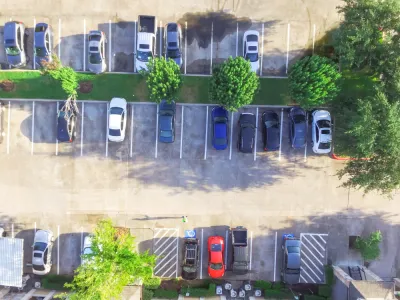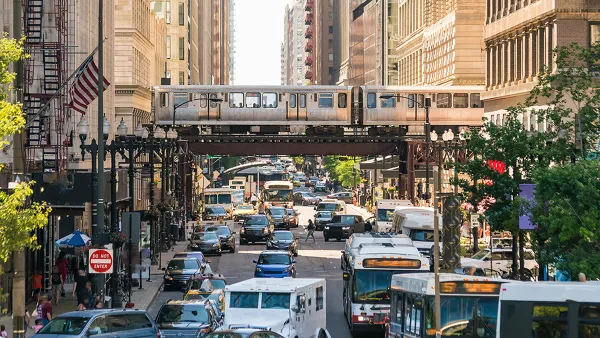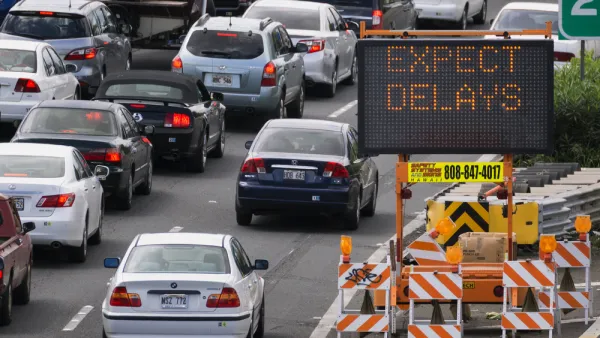New research published in the Urban Studies journal does the difficult work of connecting the dots between parking and driving.

A forthcoming academic paper offers a "breakthrough" conclusion, according to an article by Michael Andersen: "Bigger parking lots make us drive more."
"What Do Residential Lotteries Show Us About Transportation Choices?" was written by Adam Millard-Ball, Jeremy West, Nazanin Rezaeib, and Garima Desaib (from the Los Angeles and Santa Cruz representatives of the University of California system) and published by the Urban Studies journal. The methodology of the study required identifying and studying a randomized sample of human behavior, which the researchers found in, as explained by Andersen, "the free, site-specific lotteries that San Francisco uses to select who gets to live in the price-regulated homes of new apartment and condo buildings."
"After surveying the auto ownership and basic transportation habits of the residents of 2,654 homes in 197 projects built since 2002, the authors […] found that projects with more on-site parking induce more auto ownership," according to Andersen. More specifically, the paper reads as follows: "Buildings with at least one parking space per unit (as required by zoning codes in most U.S. cities, and in San Francisco until circa 2010) have more than twice the car ownership rate of buildings that have no parking…"
The research did not identify a correlation between parking supply and employment, but did identify a connection between parking and more riving, less transit use, and less walking.
After describing the methodology and findings of the research, Andersen also digs into the consequences of the findings, namely, that the research provides evidence that changing the way U.S. cities are built would result in the behavior changes that will lower greenhouse gas emissions to ensure the future of the planet.
FULL STORY: Verified: More Parking Puts More Cars on the Road

National Parks Layoffs Will Cause Communities to Lose Billions
Thousands of essential park workers were laid off this week, just before the busy spring break season.

Retro-silient?: America’s First “Eco-burb,” The Woodlands Turns 50
A master-planned community north of Houston offers lessons on green infrastructure and resilient design, but falls short of its founder’s lofty affordability and walkability goals.

Delivering for America Plan Will Downgrade Mail Service in at Least 49.5 Percent of Zip Codes
Republican and Democrat lawmakers criticize the plan for its disproportionate negative impact on rural communities.

Test News Post 1
This is a summary

Test News Headline 46
Test for the image on the front page.

Balancing Bombs and Butterflies: How the National Guard Protects a Rare Species
The National Guard at Fort Indiantown Gap uses GIS technology and land management strategies to balance military training with conservation efforts, ensuring the survival of the rare eastern regal fritillary butterfly.
Urban Design for Planners 1: Software Tools
This six-course series explores essential urban design concepts using open source software and equips planners with the tools they need to participate fully in the urban design process.
Planning for Universal Design
Learn the tools for implementing Universal Design in planning regulations.
EMC Planning Group, Inc.
Planetizen
Planetizen
Mpact (formerly Rail~Volution)
Great Falls Development Authority, Inc.
HUDs Office of Policy Development and Research
NYU Wagner Graduate School of Public Service





























